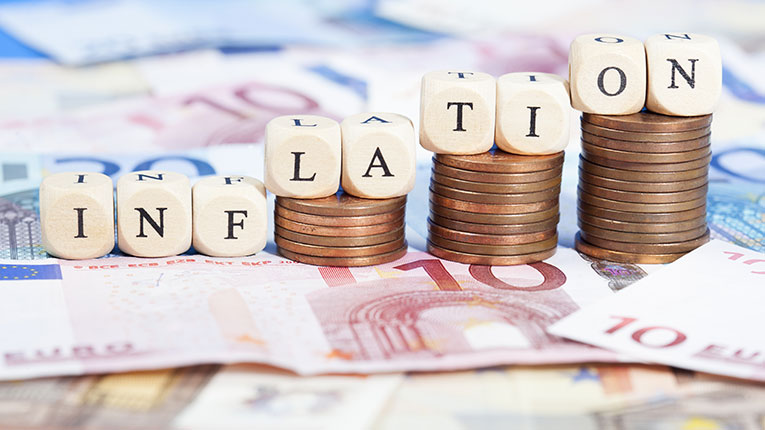The Board of the National Bank of Romania, having convened for the meeting of 5 April 2022, decided to increase the monetary policy rate to 3.00 percent per annum, from 2.50 percent per annum, as of 6 April 2022.
”The annual inflation rate continued to rise gradually in the first two months of 2022, contrary to expectations, climbing to 8.35 percent in January and to 8.53 percent in February, from 8.19 percent in December 2021. This time round, the exogenous CPI components had a disinflationary contribution overall, following the slower pace of increase of electricity and natural gas prices,” BNR reveals.
”Evolution of the adjusted Core 2 component continues to reflect the effects of the surge in agri-food commodity prices and energy and transport costs, alongside the influences of persistent bottlenecks in production and supply chains, compounded by increasingly higher short-term inflation expectations, the resilience of demand in certain segments, as well as by the significant share of food items and imported goods in the CPI basket.
”Average annual CPI inflation rate and average annual inflation rate calculated based on the Harmonised Index of Consumer Prices (HICP – inflation indicator for EU Member States) went up to 6.0 percent and 5.0 percent respectively in February 2022, from 5.0 percent and 4.1 percent respectively in December 2021,” say the central bank analysts.
Economic activity continued to weaken more than expected in 2021 Q4, falling by 0.1 percent versus the previous quarter, but solely on the back of the marked deterioration in the performance of agriculture. The developments make it likely for excess aggregate demand to remain low during this period, in line with February expectations, given inter alia the implications of the new revision of statistical data on economic growth in 2020 and 2021.
At the same time, annual GDP dynamics saw in 2021 Q4 a markedly stronger-than-anticipated decline, i.e. to 2.4 percent from 6.9 percent in Q3, but almost entirely on the back of the contribution of the change in inventories falling to a significant negative value. Household consumption made only a very slightly lower positive contribution – which thus remained particularly elevated –, while gross fixed capital formation recorded a somewhat improved contribution.
In turn, net exports made a slightly lower negative contribution to annual GDP dynamics, as the decrease in the change in imports of goods and services outpaced that of exports. Against this background, the annual increase in the negative trade balance decelerated considerably as against Q3, due also to the narrowing of the unfavourable differential between the dynamics of import prices and those of export prices. Conversely, the current account deficit widened in annual terms at a significantly faster pace, under the impact of the marked worsening of the secondary income balance, on account of a decrease in inflows of EU funds to the current account as compared to the same year-earlier period.
Recent developments in high-frequency indicators point to a slight, probably temporary, recovery in economic activity in 2022 Q1, implying however the deceleration in annual GDP growth in this period as well, due to an ongoing base effect.
”According to current assessments, the annual inflation rate is expected to rise somewhat more steeply in the coming months than anticipated in February, under the impact of supply-side shocks. Behind the renewed worsening of the near-term inflation outlook stand the much higher increases expected for fuel prices, and especially for processed food prices, mainly due to the stronger advance in crude oil and agri-food commodity prices, amid the war in Ukraine and the international sanctions in place. The inflationary effects thus exerted are foreseen to prevail in the near term over the substantial disinflationary impact presumably generated by the one-year extension of capping schemes for electricity and natural gas prices for households. However, significant uncertainties are still associated with how the impact of these schemes is assessed and included in the CPI calculation.”
Uncertainties and risks surrounding medium-term prospects increase, nevertheless, considerably owing to the war in Ukraine and the associated sanctions, which pose a new sizeable supply-side shock globally. This exerts divergent effects on inflation and economic activity domestically, mainly by compounding the energy crisis and the production chain bottlenecks, but also via other channels, such as economy and inflation dynamics in Europe/worldwide, consumer and investor confidence, as well as risk perception towards the region, with an impact on financing costs.
A major source of uncertainties and risks also remains the absorption of EU funds – especially those under the Next Generation EU programme – that is conditional on fulfilling strict milestones and targets for implementing the approved projects. At the same time, the improvement in the epidemiological situation on the domestic front led to the end of the state of alert in the first 10-day period of March 2022 and to the lifting of all mobility restrictions, with favorable effects on economic activity.

